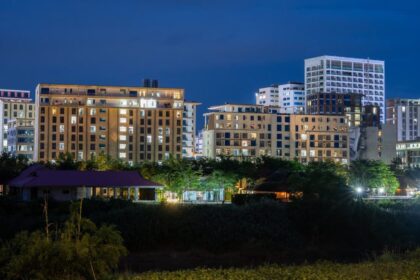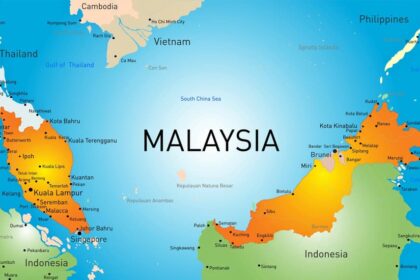Introduction: The Human Cost of South Korea’s Age-Based Employment Policies
South Korea, once celebrated for its rapid economic ascent and social cohesion, now faces a profound demographic and social challenge: the intersection of an aging population, rigid employment practices, and one of the highest elderly poverty rates in the developed world. At the heart of this crisis lies the country’s “peak wage” system and mandatory retirement policies, which, while designed to balance generational employment, have left millions of older workers financially vulnerable and socially marginalized.
- Introduction: The Human Cost of South Korea’s Age-Based Employment Policies
- What Is the Peak Wage System and Why Was It Introduced?
- Mandatory Retirement and Its Consequences
- The Scale of Elderly Poverty in South Korea
- Why Are Pensions and Social Security So Inadequate?
- Does the Peak Wage System Help or Hurt Younger Workers?
- The Debate: Raise the Retirement Age or Abolish Mandatory Retirement?
- International Comparisons: Lessons from Japan and Beyond
- Broader Economic and Social Implications
- What Are the Solutions? Policy Recommendations and the Road Ahead
- In Summary
Recent reports from Human Rights Watch (HRW) and the Organization for Economic Cooperation and Development (OECD) have brought renewed attention to the plight of South Korea’s older workforce. As the government debates raising the retirement age and reforming its wage structures, the nation stands at a crossroads—one that will determine the dignity, security, and economic participation of its elderly citizens for decades to come.
What Is the Peak Wage System and Why Was It Introduced?
The “peak wage” system is a policy unique to South Korea (and, to a lesser extent, Japan), introduced as a compromise between extending the retirement age and controlling labor costs. Under this system, workers’ salaries are systematically reduced—often by 20% at age 56, with further 10% cuts each year—until mandatory retirement, typically at age 60. The rationale is that by lowering the wage burden of older employees, companies can afford to keep them on staff longer and use the savings to hire younger workers, thus addressing both youth unemployment and the challenges of an aging workforce.
However, the reality has proven more complex. While the system was intended to promote intergenerational balance and productivity, it has instead contributed to widespread age-based discrimination, financial insecurity, and a sharp decline in the quality of work available to older adults.
Mandatory Retirement and Its Consequences
South Korean law allows companies to set a mandatory retirement age, and 95% of firms with more than 300 employees have done so, almost always choosing age 60. This policy, combined with the peak wage system, means that workers like G Young Soo—a pseudonymous insurance worker interviewed by HRW—see their salaries slashed by nearly half in the years leading up to retirement, even as their workload remains unchanged.
For many, the psychological toll is as severe as the financial one. D Young Sook, a nurse facing mandatory retirement after 36 years, described the prospect as “standing by myself on a windy road.” Such stories are common: older workers report humiliation, anxiety, and a loss of purpose as they are pushed out of their main careers and into lower-paid, precarious jobs such as security guards or care workers.
Bridget Sleap, author of the HRW report, summarizes the impact:
“They deny older workers the opportunity to continue working in their main jobs, pay them less, and push them into lower-paid, precarious work, all just because of their age. The government should stop punishing workers for getting older.”
These policies are not just a matter of workplace culture—they have become a structural driver of poverty and inequality among South Korea’s elderly.
The Scale of Elderly Poverty in South Korea
South Korea’s elderly poverty rate is the highest among OECD countries. According to the 2023 OECD report, 40.4% of Koreans aged 65 and older live below the poverty line—nearly three times the OECD average of 14.2%. Other sources put the figure between 38% and 48%, but all agree it is a national crisis. This is despite the fact that South Korea’s seniors are among the most likely in the developed world to remain in the workforce: as of 2024, 20% of the population is over 65, and the employment rate for this group is 37.3%, more than double the OECD average.
Yet, the jobs available to older workers are overwhelmingly insecure and poorly paid. Nearly 70% of workers over 60 are in non-regular employment, earning on average 29% less than their younger colleagues. The average monthly pension is just 600,000 won (about $450), and only about one-third of retirees receive any pension at all. The gap between the retirement age (60) and pension eligibility (rising to 65 by 2033) leaves many with a five-year period of little or no income.
Why Are Pensions and Social Security So Inadequate?
South Korea’s pension system, established in 1988, was never designed to provide comprehensive old-age security. Public spending on old-age benefits remains low—just 1.6% of GDP in 2007, and the average pension replaces only about one-third of a worker’s previous income. The Basic Pension, a tax-financed benefit for those over 65, covers about 70% of the elderly but provides only 8% of gross average earnings. Even doubling this benefit would leave poverty rates high.
Several factors contribute to this inadequacy:
- Short contribution periods: The average worker contributes to the National Pension Service (NPS) for just 18.6 years, far less than in other OECD countries.
- Low participation: Only about 60% of the working-age population contributes to the NPS, despite legal requirements.
- Preference for lump-sum payments: 96% of eligible workers opt for a one-time severance payment rather than a company pension, often due to early retirement practices.
- Low personal savings: Personal pension savings are just 32% of GDP, compared to the OECD average of 100%.
As a result, many elderly Koreans are forced to rely on low-wage, insecure jobs to survive, and the traditional family support system has eroded in the face of urbanization and changing social norms.
Does the Peak Wage System Help or Hurt Younger Workers?
One of the main justifications for the peak wage system is that it frees up resources to hire younger employees. Academic studies using difference-in-differences methods have found some evidence that the system increases youth employment, especially in firms with a higher proportion of elderly workers. However, the effect is modest and comes at a significant cost to older workers’ financial security and dignity.
Moreover, empirical analyses suggest that for every additional older worker employed, the number of younger workers may decrease by 0.4 to 1.5, particularly in firms with limited flexibility. This indicates that simply raising the retirement age or cutting older workers’ wages does not automatically create jobs for the young. Without broader labor market reforms—such as shifting from seniority-based to performance-based pay and offering flexible work arrangements—the intended benefits may not materialize.
The Debate: Raise the Retirement Age or Abolish Mandatory Retirement?
With the population aging rapidly (projected to reach 30% over 65 by 2035 and 40% by 2050), the government is under pressure to reform its retirement and wage policies. President Lee Jae Myung has pledged to gradually raise the mandatory retirement age to 65, closing the five-year gap before pension eligibility. The National Human Rights Commission and other advisory bodies have recommended the same, citing the need to guarantee a dignified life for older workers.
However, this proposal has sparked fierce debate. Younger workers fear that extending the retirement age will limit their job prospects and reduce productivity. Labor unions are divided: some support raising the retirement age, while others argue for abolishing mandatory retirement altogether. Legal experts warn that simply raising the retirement age could give companies more years to apply discriminatory wage cuts under the current system.
Labor lawyer Kim Ki-duk argues:
“The retirement system itself is problematic. Simply raising the retirement age to 65 would give companies more years to apply discriminatory wage cuts under the current system. Workers should be able to continue as long as they can perform their duties.”
HRW and other human rights advocates go further, calling for the abolition of both the mandatory retirement age and the peak wage system, in line with international human rights law, which prohibits employment decisions based solely on age unless justified as necessary and proportionate.
International Comparisons: Lessons from Japan and Beyond
Japan, which entered a super-aged society before Korea, offers a cautionary but instructive example. Over the past 30 years, Japan has implemented a phased approach: a 60-year retirement age, a 65-year employment guarantee, and policies to support work up to age 70. Crucially, Japan reformed its wage system and introduced flexible work arrangements alongside these changes, allowing companies and workers to choose from various post-retirement options, including reemployment, freelance contracts, and entrepreneurship support.
Japan’s experience shows that raising the retirement age is not a panacea. A gradual, multi-faceted strategy—tailored to labor market conditions and legal frameworks—is essential. Key elements include:
- Flexible wage structures: Moving from seniority-based to performance- or task-based pay.
- Diverse working arrangements: Flexibility in hours and job roles.
- Step-by-step expansion of reemployment systems: Encouraging voluntary adoption before mandating changes.
These reforms aim to enhance the quality of life for older workers while maintaining generational balance in the labor market.
Broader Economic and Social Implications
The challenges facing South Korea’s elderly are not isolated—they reflect broader trends of rising inequality, wage stagnation, and demographic decline. Since the 2000s, income inequality has increased, and the share of low-wage workers remains high. The country’s birth rate is the lowest in the world, and the national pension fund faces potential depletion within decades without major reform.
Efforts to boost household incomes and social welfare have had mixed results. While minimum wage increases and expanded social programs under previous administrations reduced some measures of inequality, wealth concentration (especially in real estate) and economic growth have lagged. The COVID-19 pandemic and global economic shifts have further strained public finances and household security.
Experts warn that without comprehensive reform—including active government intervention, increased social spending, and a shift away from rigid seniority-based employment practices—South Korea risks deepening its demographic and economic crisis.
What Are the Solutions? Policy Recommendations and the Road Ahead
There is broad consensus among researchers, human rights advocates, and international organizations that piecemeal reforms will not suffice. The following measures are widely recommended:
- Abolish mandatory retirement and the peak wage system: Employment decisions should be based on ability, not age, in line with international human rights standards.
- Reform wage structures: Shift from seniority-based to performance-based pay to incentivize retention of skilled older workers without penalizing them financially.
- Expand and strengthen social security: Increase pension coverage and benefit levels, ensure adequate unemployment and health benefits, and provide targeted support for the most vulnerable elderly.
- Promote flexible and diverse work arrangements: Encourage part-time, freelance, and reemployment options for older adults, as well as retraining and upskilling programs.
- Balance generational interests: Design policies that support both older and younger workers, avoiding zero-sum trade-offs and fostering intergenerational solidarity.
Ultimately, the goal is to build a labor market and social safety net that values the contributions of all citizens, regardless of age, and ensures dignity and security in old age.
In Summary
- South Korea’s peak wage system and mandatory retirement policies have contributed to the highest elderly poverty rate in the OECD, despite high rates of senior employment.
- The system was intended to balance generational employment but has led to widespread age-based discrimination and financial insecurity for older workers.
- Pension and social security systems are inadequate, leaving many elderly reliant on low-wage, insecure jobs.
- Raising the retirement age alone is unlikely to solve the problem without broader reforms to wage structures, employment practices, and social welfare.
- International experience, especially from Japan, suggests that gradual, multi-faceted reforms are needed, including flexible work arrangements and performance-based pay.
- Comprehensive policy changes are required to ensure dignity, security, and economic participation for South Korea’s aging population.












